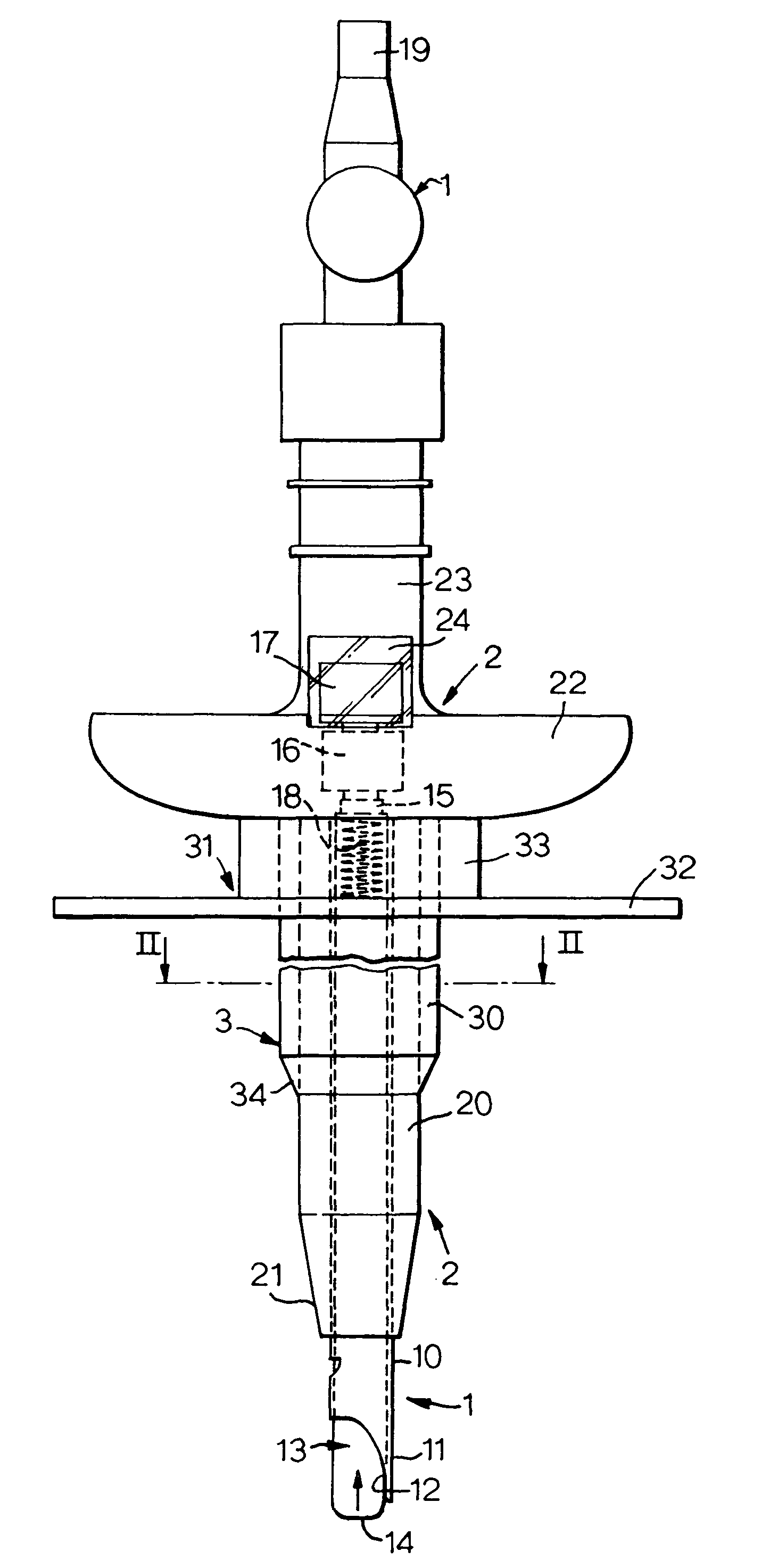Medico-surgical instruments
a technology of surgical instruments and stents, applied in the field of stents, can solve the problems of not being suitable for less experienced clinicians or paramedics, not being able to achieve the correct depth of needle insertion, and the number of different components and steps is not ideal
- Summary
- Abstract
- Description
- Claims
- Application Information
AI Technical Summary
Benefits of technology
Problems solved by technology
Method used
Image
Examples
Embodiment Construction
[0014]With reference first to FIGS. 1 and 2, the tracheostomy apparatus comprises a needle assembly 1, a dilator assembly 2 mounted on the outside of the needle assembly and a tracheostomy tube 3 mounted on the outside of the dilator assembly. These components are supplied mounted with one another and are used with one another during the initial stage of the tracheostomy procedure.
[0015]The needle assembly 1 is similar to a Veress needle used in chest surgery and laparascopy. The assembly 1 has a straight, rigid steel needle 10 of circular section which opens axially at its patient end 11 through a cutting tip 12. An inner elongate member in the form of a hollow tube 13 extends along the needle 10 as a sliding fit. The tube 13 may be of a rigid plastics material and has a rounded, open forward or patient end 14. The rear end 15 of the tube 13 projects from the needle 10 and carries an indicator in the form of two colored flags 16 and 17 spaced axially of one another. The forward fla...
PUM
 Login to View More
Login to View More Abstract
Description
Claims
Application Information
 Login to View More
Login to View More - R&D
- Intellectual Property
- Life Sciences
- Materials
- Tech Scout
- Unparalleled Data Quality
- Higher Quality Content
- 60% Fewer Hallucinations
Browse by: Latest US Patents, China's latest patents, Technical Efficacy Thesaurus, Application Domain, Technology Topic, Popular Technical Reports.
© 2025 PatSnap. All rights reserved.Legal|Privacy policy|Modern Slavery Act Transparency Statement|Sitemap|About US| Contact US: help@patsnap.com



